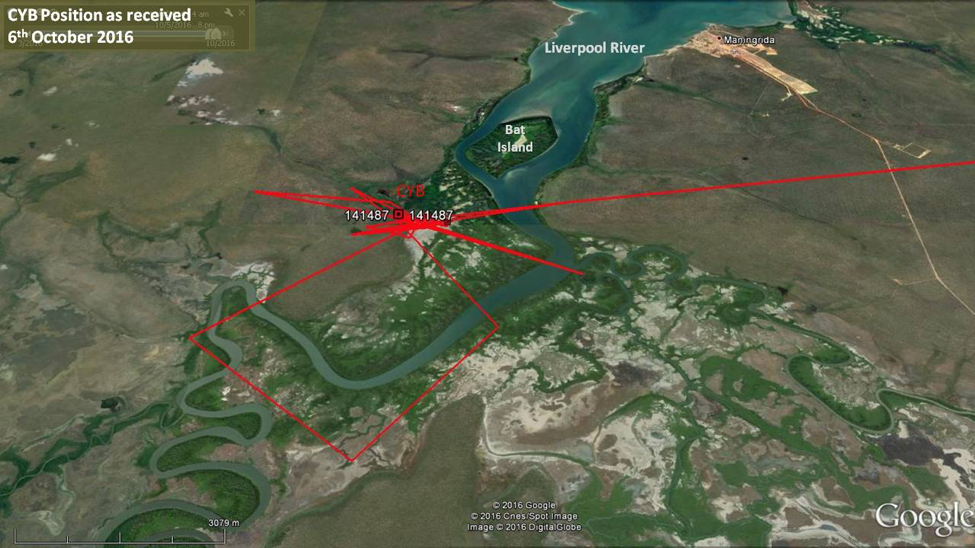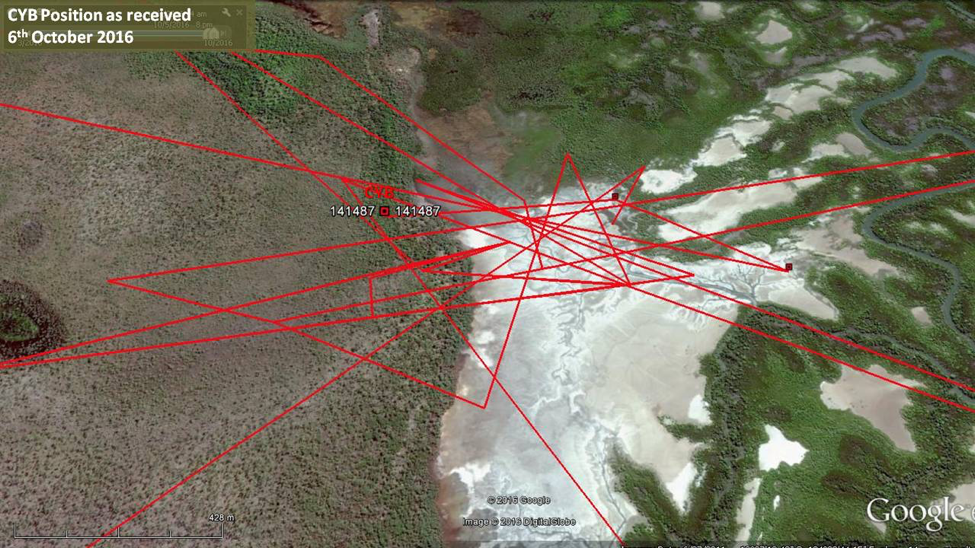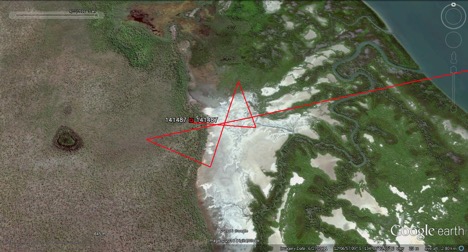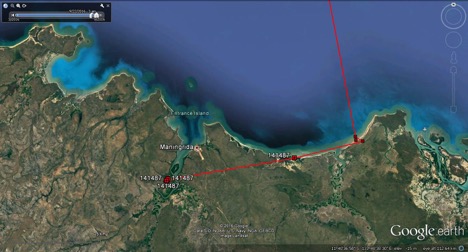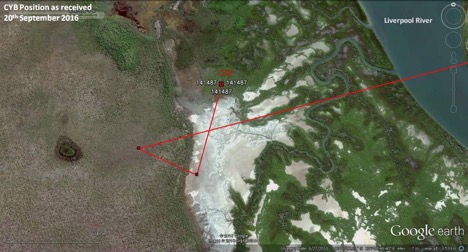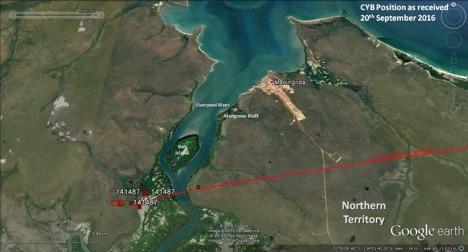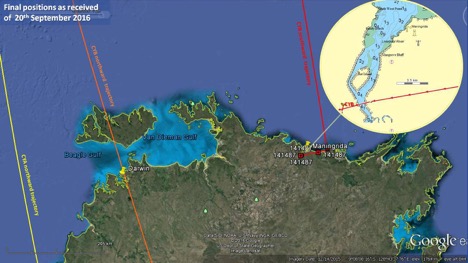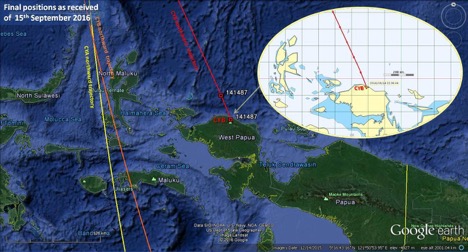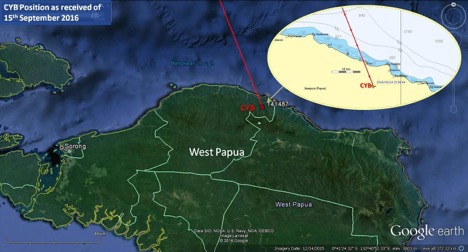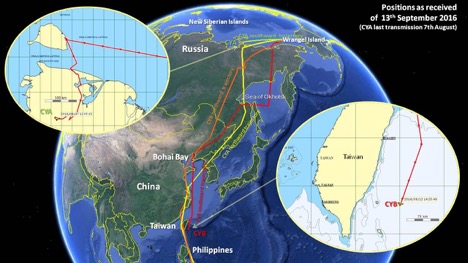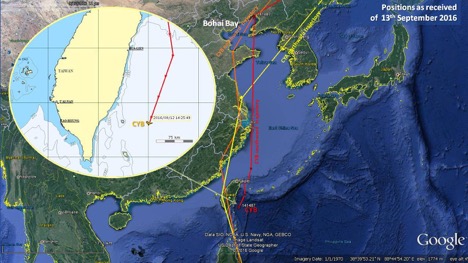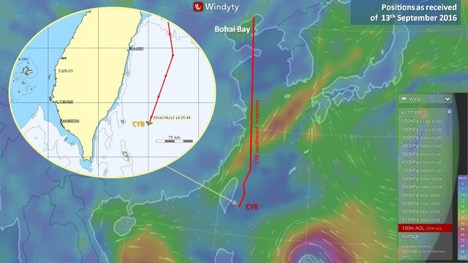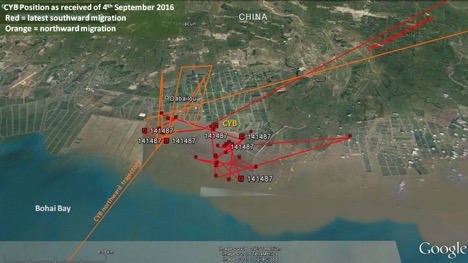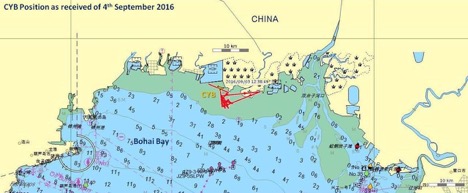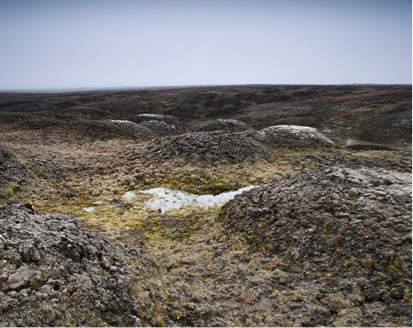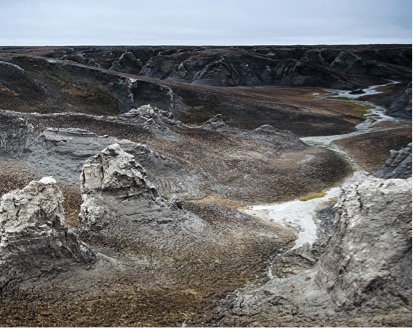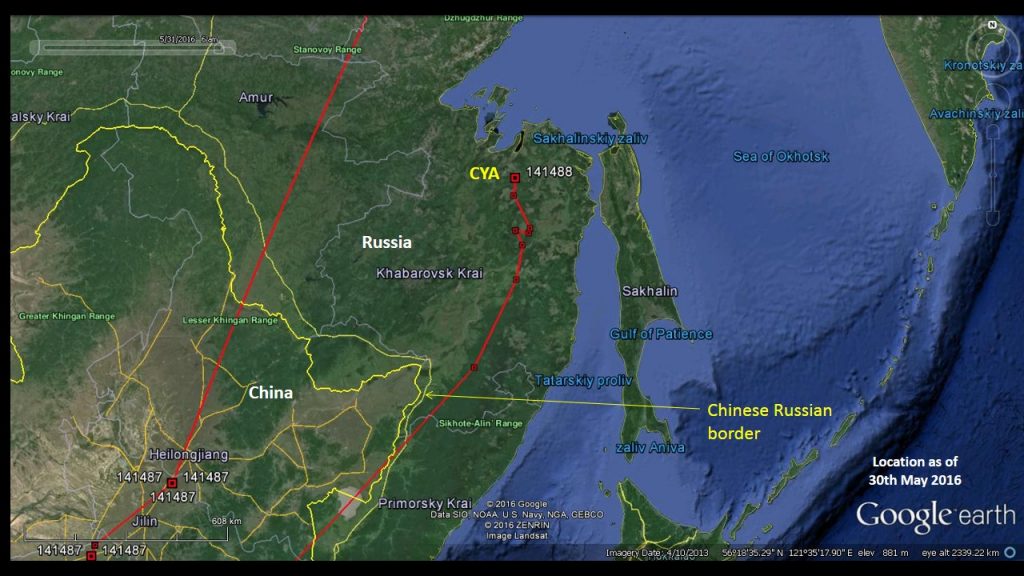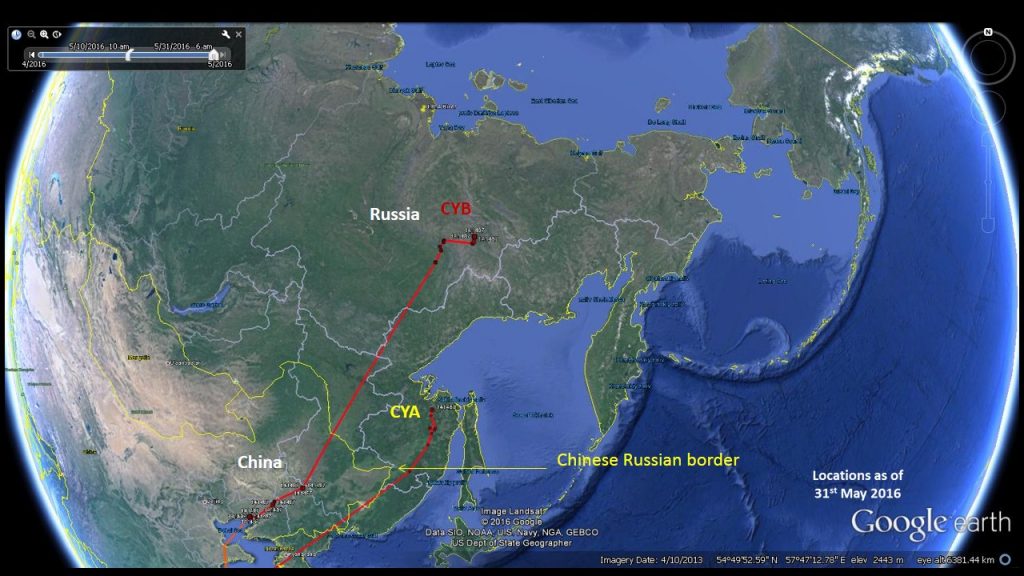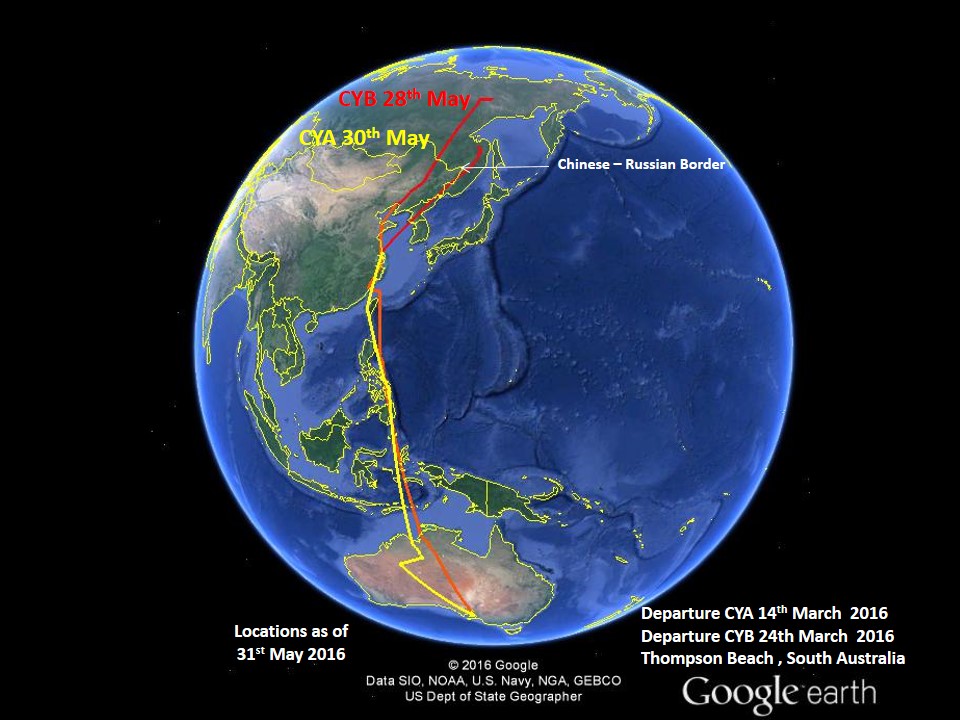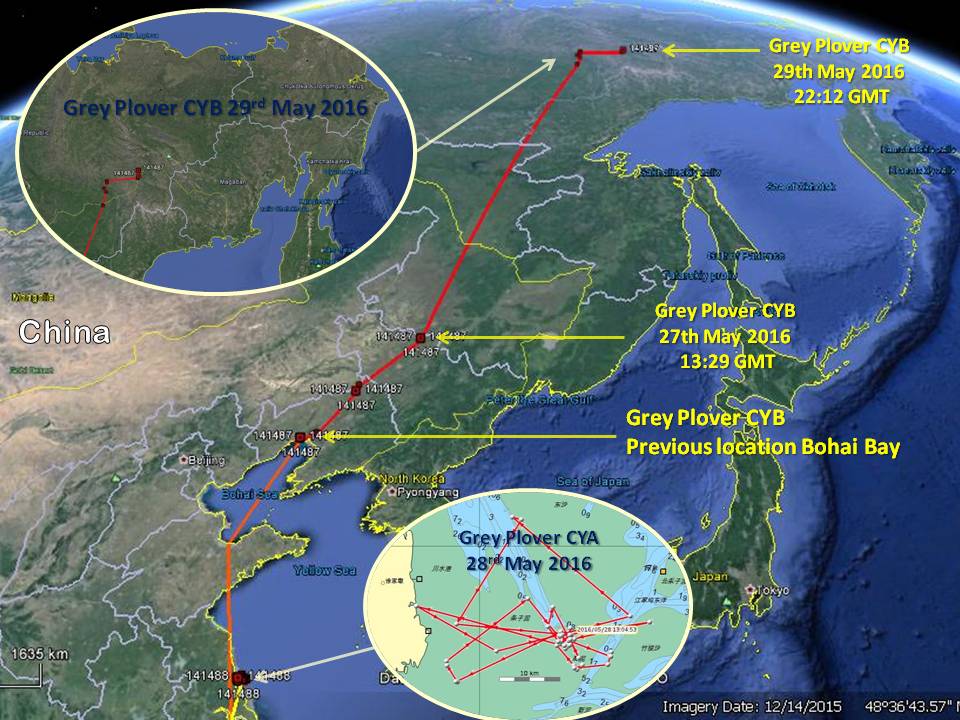Grey Plover 2016
October 18, 2016
Grey plover CYB transmission lost, Maningrida, Arnhen Land
The last transmission received for Grey Plover CYB was over the 11th and 12th of October, and it has now been a number of on and off transmission cycles without signal. The transmitter or battery may have malfunction, the harness may have fallen off or the bird has been predated or died. As of the last transmission Grey Plover CYB was still roosting near the Liverpool River, 12 kilometres southwest of Maningrida, on the coast of the Arafura Sea in the Northern Territory, since landfall in Australia on the 16th of September.
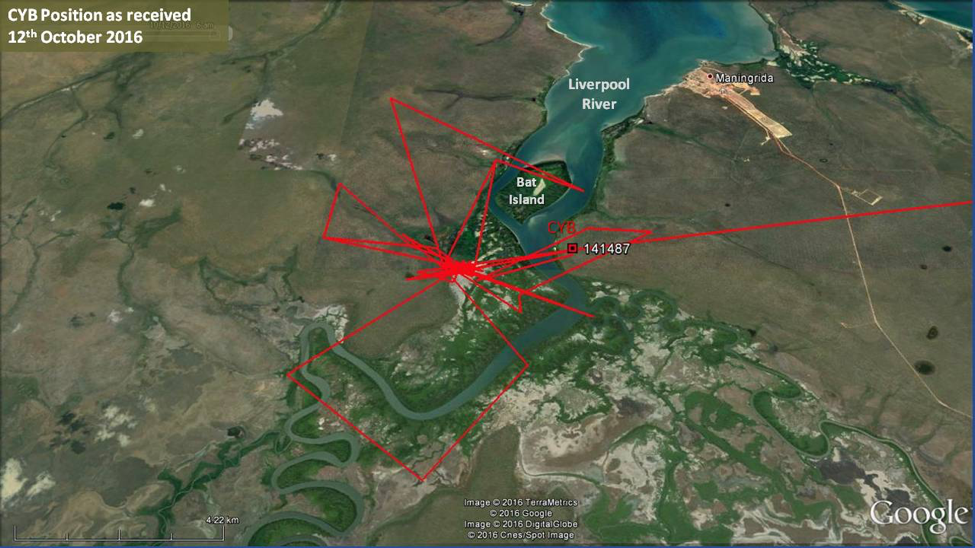
This is the first time a South Australian migratory bird has been satellite tracked from Australia to the arctic and back to Australia. CYB has travelled over 25,187 kilometres since leaving Thompson Beach, South Australia on 24th March 2016.
October 6, 2016
Grey plover CYB still near Maningrida, Arnhem Land
Although moving a little further afield the last few days, Grey Plover CYB is still roosting near the Liverpool River, 12 kilometres southwest of Maningrida, on the coast of the Arafura Sea in the Northern Territory.
September 22, 2016
Grey plover CYB still near Bat Island, Maningrida, Arnhem Land
Grey Plover CYB is still on the coast of the Arafura Sea in the Northern Territory, near Bat Island in the Liverpool River Estuary, 12 kilometres southwest of Maningrida. The bird was previously 36 kilometres further east, near the mouth of the Anamayirra Creek.
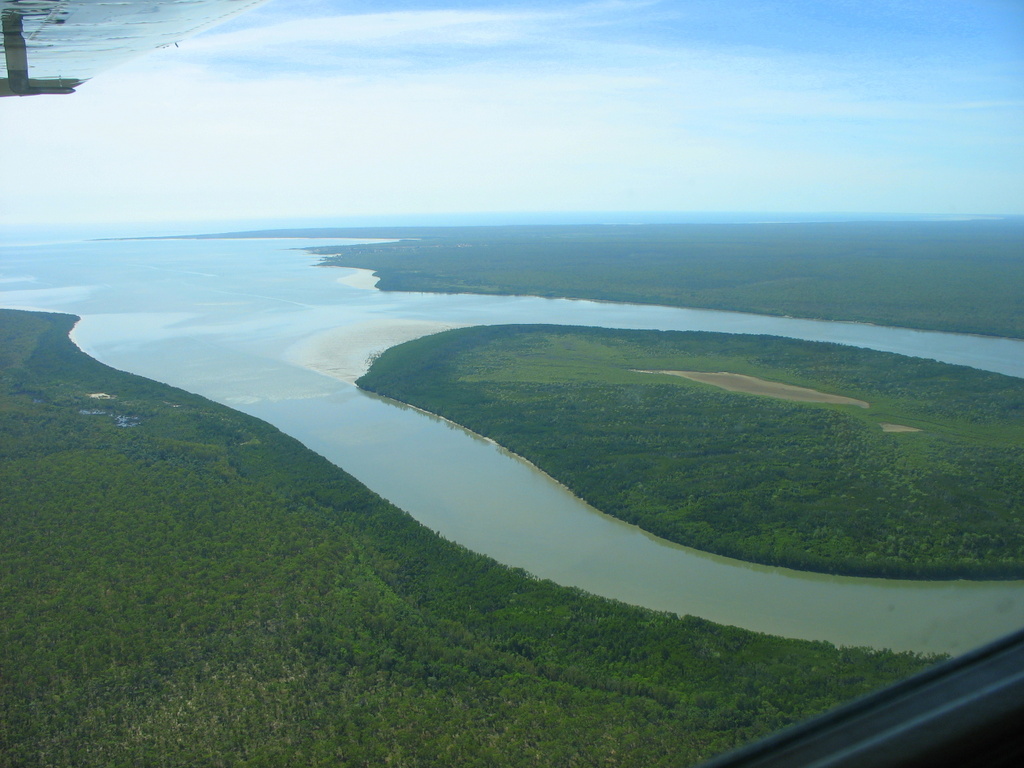
Ray Chatto, Wildlife Ranger with NT Parks and Wildlife Commission mentions that Grey plovers are found all around the NT coast but this area is one of the areas where he had larger counts of Grey Plovers during aerial and ground surveys he undertook between 1990 and 2001. Ray’s work identified the globally significance of the Northern Territory coast and coastal wetlands for many species of shorebirds.
September 20, 2016
Grey Plover CYB in Australia’a Top End – Bat Island, Maningrida, Arnhem Land
Grey Plover CYB appears to be taking a well earned rest in Arnhem Land in Australia’s Top End, after a 6,200 kilometre non-stop flight from Bohai Bay in China. She is on the coast of the Arafura Sea, and has moved 36 kilometres west, from her previous position, near the mouth of the Anamayirra Creek east of Maningrida, to the Liverpool River Estuary, 12 kilometres southwest of Maningrida, near Bat Island. This area is part of the Djelk Indigenous Protected Area.
CYB has traveled 11,592 kilometres from Wrangel Island and has clocked up over 25,187 kilometres since leaving Thompson Beach, South Australia on 24th March 2016.
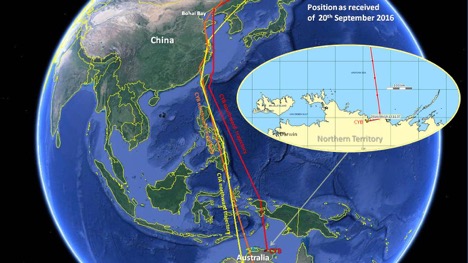
Sometime after the 10th September, Grey Plover CYB left Bohai Bay, China, flying south and as of 13th September was 2,092 kilometres south, off the south east coats of Taiwan. Skirting super typhoon Meranti , by the 14th September she made another 2,824 kilometres and was just inland of the West Papuan coast. Since that position she flew a further 1,309 kilometres to make land fall on a beach east of the Blyth River in West Arnhem, Northern Territory about 45 kilometres east of the Aboriginal community of Maningrida.
CYB then moved twenty kilometers west near the mouth of the Anamayirra Creek estuary about 27 kilometres east of Maningrida. This area is part of the Djelk Indigenous Protected Area which was declared September 2009 and covers an area of 6,672 square kilometres. It is patrolled by Djelk Rangers, a Maningrida based Indigenous land management group that has been in continuous operation since the early 1990s. Their area of responsibility covers the Bawinanga Aboriginal Corporation (BAC) region encapsulating what is now the Djelk Indigenous Protected Area.
Only 2,500 kilometres more to Thompson Beach, South Australia, where Grey Plover CYB left on the 24th of March 2016.
Go Plover!
September 15, 2016
Grey plover CYB skirts typhoon and over West Papua
CYB has skirted super typhoon Meranti, and as of a position received on the 14th September was passing over Indonesia ten kilometers inland of the West Papuan coast southwest of the small village of Waibeem or Waibim.
The bird appears to have taken advantage of strong northerly winds on the leading edge of Super Typhoon Meranti.
September 13, 2016
Grey plover CYB headed south towards a super typhoon
Sometime after the 10th September, Grey Plover CYB left Bohai Bay, China, flying south and as of 13th September was south east of Taiwan. Hopefully CYB will be able to use strong north-easterly winds from the approaching severe tropical Cyclone tracking for Taiwan to skirt around the storm and head south over the Philippines.
CYB has clocked up over 21,025 kilometres since leaving Thompson Beach, South Australia on 24th March 2016
The US based Cable News Network (CNN) reports Taiwan and mainland China are bracing for the approach of Super Typhoon Meranti, which is forecast to bring torrential rains and damaging winds on Wednesday. In the last 24 hours, the typhoon transformed from a Category 1 storm to a top-scale Category 5 hurricane. Currently, it is sustaining winds of 183 miles per hour (295 kph) with gusts up to 223 mph (360 kph). The storm is forecast to just miss making direct landfall over southern Taiwan and track through the Luzon Strait toward China. See Weather Underground for more details on Typhoon Meranti
September 4, 2016
Update on SA Grey Plovers
As of 4th September, Grey Plover CYB was still on the tidal flats northern Bohai Bay, China. However, there is still no sign of CYA.
August 25, 2016
Grey Plover CYB still in northern Bohai Bay, China.
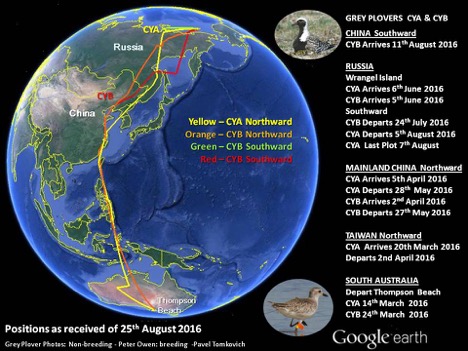
As of 25th August, Grey Plover CYB was still on the tidal flats northern Bohai Bay, China, since arriving at this location around the 11th of August. CYB is using the same tidal flat and aquaculture pond areas as that used on northward migration stopover from April to May.
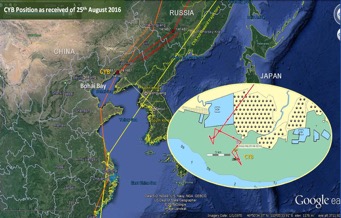
CYB has made a 1,900 kilometre flight from its last position on the tidal flats of Ul’banskiy Bay in eastern Russia. The last fix from that location was 6th August. CYB has traveled 5,340 kilometres from Wrangel Island and has clocked up over 18,935 kilometres since leaving Thompson Beach, South Australia in 24th March 2016.
Last position for CYA on mainland Siberia
No further transmissions have been received for Grey Plover CYA since the last position on the 7th August. CYA was in transit having left the New Siberian Islands was some 280 kilometers south from the Siberian coast. This last location is very close to a tundra pond area CYA appears to have had a short half day stop over on the 4th June 2016 during its northward migration.
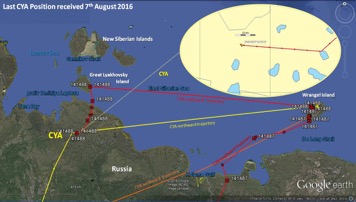
The juvenile Grey Plovers are probably still on the island and typically stay for some time after the adults depart. Historical records for Wrangel Island note that the last active nests being recorded on the 25th July. Adults may start departing in the 1st week of August and juveniles may stay until the second week of September.
August 5, 2016
CYA leaves Wrangel Island and heads east to New Siberian Islands
CYA moved back to her original territory just prior to departing Wrangel Island. She has made a 1,245 flight east to the New Siberian Islands. Until the last week, CYA had remained in the same nesting area since arrival on Wrangel around the 6th June.
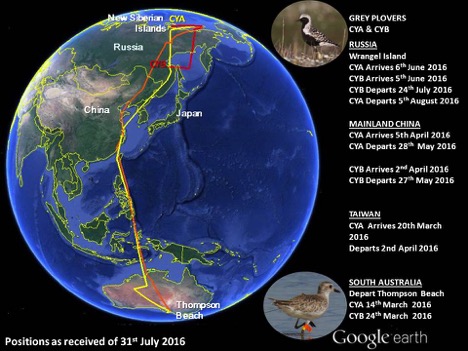
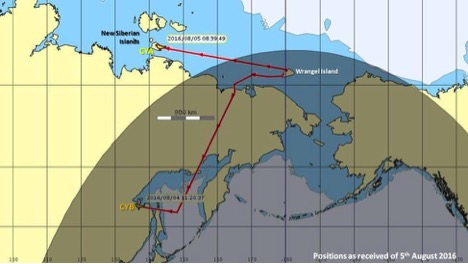
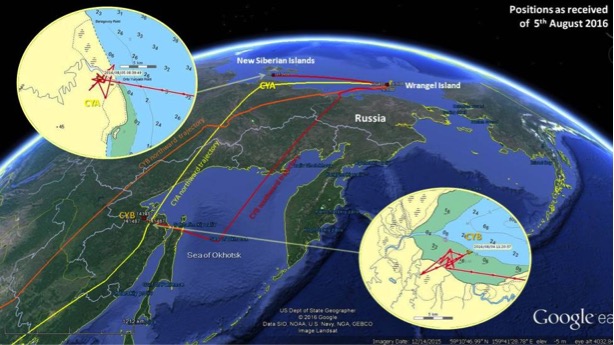
The New Siberian Islands are a low lying group of islands with some low rounded hills. The islands were formed by retreating sea levels and are composed of permafrost and soil. The island is believed to be decreasing in size with warmer climate thawing the permafrost and loss of soil.
The juvenile Grey Plovers are probably still on the island and typically stay for some time after the adults depart. Historical records for Wrangel Island note that the last active nests being recorded on the 25th July. Adults may start departing in the 1st week of August and juveniles may stay until the second week of September.
Grey Plover CYB stopover on Russian mainland
CYB remains on the tidal flats of Ul’banskiy Bay in the Tuguro-Chumikansky District of Khabarovsk Krai, Russia.
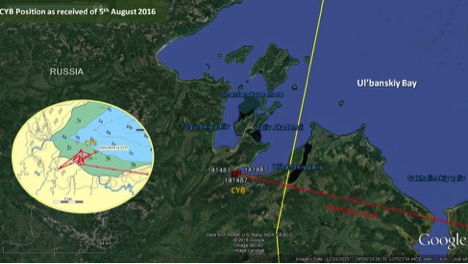
Grey Plover CYB arrived at this position around the 29th July after leaving Wrangel Island on the 24th July. Grey Plover CYB headed south west and then south to the Siberian mainland and then over the Sea of Okhotsk between the Russian Kamchatka Peninsula and Kuril Islands. About 900 kilometres north-east of the island of Hokkaido, Japan the bird veered west to its current position on the Russian mainland. CYB spent some fifty days on Wrangel Island since arriving on around the 5th June. The bird resettled a number of times, but had stayed in one general location for some thirty days so it is possible it nested successfully.
July 4, 2016
Hatchlings?
Plover CYA has been in a nesting territory now for some twenty-eight days and after at least a week of settling into a territory with a male would have settled down into laying of up to four eggs over a six-day period. (We know CYA is a female from DNA test of a shed feather). Her partner would have been acting as a sentinel and defender against predators, both on ground for foxes and in the air for jaegers and birds of prey. Incubation will take up to twenty-eight days for all the eggs, so by now there may well be chicks, staying close to the brooding bird. Both male and female will help incubate.
When CYA is not brooding, she is probably spending time outside the territory during the day. This may help to distract predators away from the nesting territory. The off duty grey plovers will aggressively defend their nest particularly from aerial predators, enabling the mate to stay on the nest. With the hatching of chicks, the birds’ behaviour may change. The male plovers will remain alert for long hours during the first few days, and may lose weight as they rarely feed. They will keep watch from nearby higher ground where they can see the nest and brooding partner. The birds will quietly call to the chicks, but with any danger, the male will respond with a loud alarm call. CYA will spend most of the first few days of hatching brooding with some feeding. After a week, the pair will go back to sharing the brooding and feeding. If a predator appears the nesting bird may sneak away from the nest, but then distract the predator with alarm calls or attacking predators such as foxes and birds of prey.
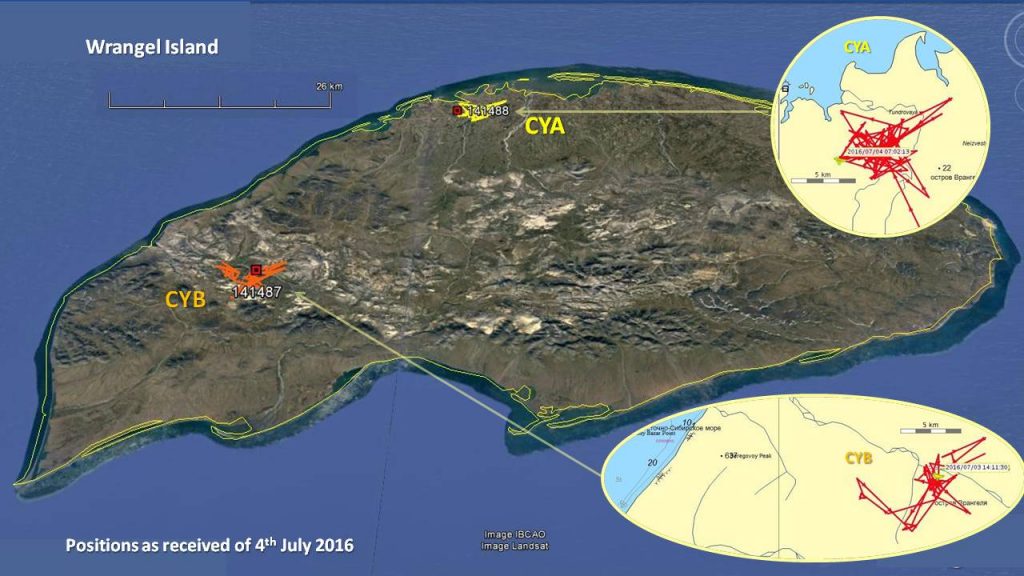
CYB, who we think is also female, has been more unsettled. Given what appears to be an apparent disrupted start, it may be quite late in the season for her nesting attempt. Grey Plover females may leave the unfledged brood in the care of their mate, and depart the breeding grounds altogether to start their southward journey.
Tony’s research this time has found that a guy called Harold Mayfield spent time watching Grey Plovers nest on Bathurst Island in the Canadian arctic, in the early 1970’s. He described that “at the time of hatching, whichever adult was in attendance flew away with pieces of eggshell within minutes after a young bird broke free. While the other young were hatching, the earlier hatchlings ventured as much as 20 cm out of the nest. The young alternated sleep and vigorous activity within and outside the edges of the nest. Both parents sometimes twittered softly when approaching or covering the chicks. He also saw the elaborate distraction displays we talked of earlier (see post June 26 below).
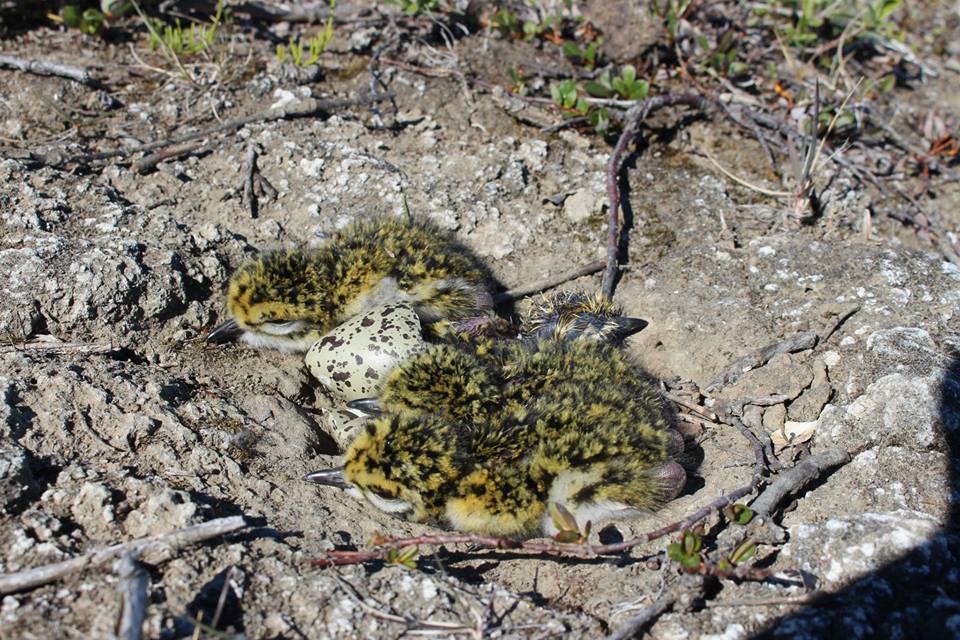
While these chicks in the photo above are not of the birds we are monitoring at Wrangel Island, they do show the colouring and habitat of a nesting pair of Grey Plovers taken in Alaska by Aaron Gottesman.
Tony’s references for this posting were: Black-Bellied Plover Incubation and Hatching Author: Harold F. Mayfield Source: The Wilson Bulletin, Vol. 85, No. 1 (Mar., 1973), pp. 82-85 Published by: Wilson Ornithological Society http://www.jstor.org/stable/4160300.
Other information referenced from Byrkjedal & Thompson, 1998, Tundra Plovers: The Eurasian, Pacific and American Golden Plovers and Grey Plover, T. & A.D. Poyser, London
June 26, 2016
Some background to Grey Plovers
Tony Flaherty has compiled the following background to the Grey Plovers of Wrangel Island. He has researched their breeding habits and sourced some additional photos for us to share in.
CYB had arrived on Wrangel Island by the 5th of June, settling into an area of the western Island. After the 13 June, CYB had moved about 90 kilometres east nor-east to the north-eastern side of Wrangel Island. By 18th June CUB had again back to the west of the island near the initial area it had previously settled. The bird now appears settled in mountainous tundra valley area, north of the Gusinaya River to the west of Wrangel Island.
CYA arrived by the 7th June 23, and has remained settled in an area of tundra nor-north west area, south of Evans Point, Wrangel Island.
The plovers will be in full breeding plumage, living up to their northern name of Black- Bellied Plovers. Whilst in non-breeding plumage males and females are indistinct, in breeding plumage the males have blacker, darker breasts and females have more variable black patches and speckling. Grey Plovers will usually have started re-establishing or forming new pairs and occupying territories within the first week of arrival. The photo below comes thanks to Alexander Gruzder, Director of the Wrangel Island State Nature Reserve, staff and the photographer.
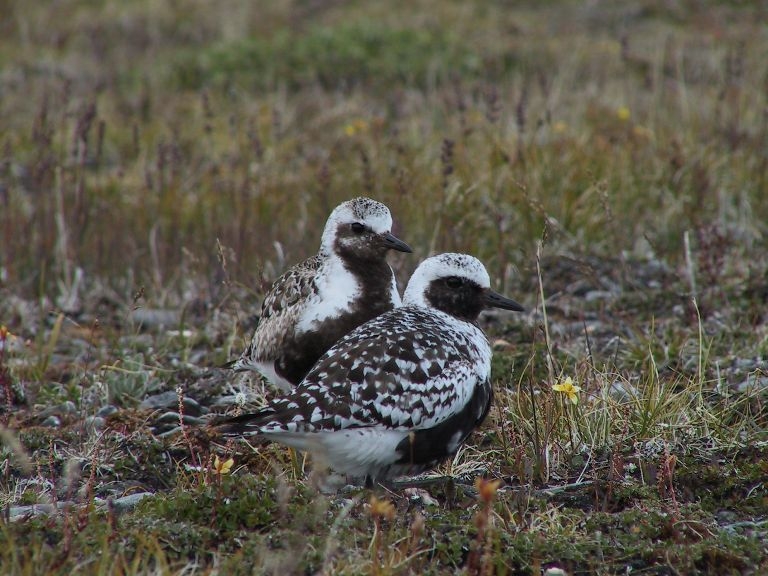
Plovers spend their first to second weeks on arrival in territorial flights and courtship behavior and preparations for egg laying. In a 1950’ expedition to the Canadian north-west territories, William Drury* describes the males undertaking territorial ground and flight displays. These “butterfly” flights up to thirty meters in the air with slow hesitant wing flaps, calling “kehweh”, or “kuidiloo”. After the slow flight the male “suddenly flew very fast, swerving and towering, and occasionally dashing at the ground”.
Before laying, female Grey Plovers will spend much time on feeding, whist the males will spend more time preening and keeping watch at the nest territory.
Grey Plovers appear to favour very exposed, bare ridges or banks for nest sites, which may be the first areas to thaw from snow. Eggs are laid in a bare scrap, sometimes with lichen, grasses or sedges. After this there will be a week or more of egg laying and a month of incubation. The chicks will need another month before they are fledged and able to fly.
The eggs are brown or pale brownish-olive colour with black or blackish- brown spots and blotches (see image below taken in Alaska). Single eggs are laid at one to three day intervals, with a total of four eggs laid within four and a half to seven days. The eggs will be incubated for 26-28 days, with both sexes caring for eggs and young. Males and females share incubation almost equally, though Grey Plover may have a less regular pattern of exchanging duties. The non-brooding birds will usually feed outside the breeding territory, so we can expect some ranging in the satellite tracking.
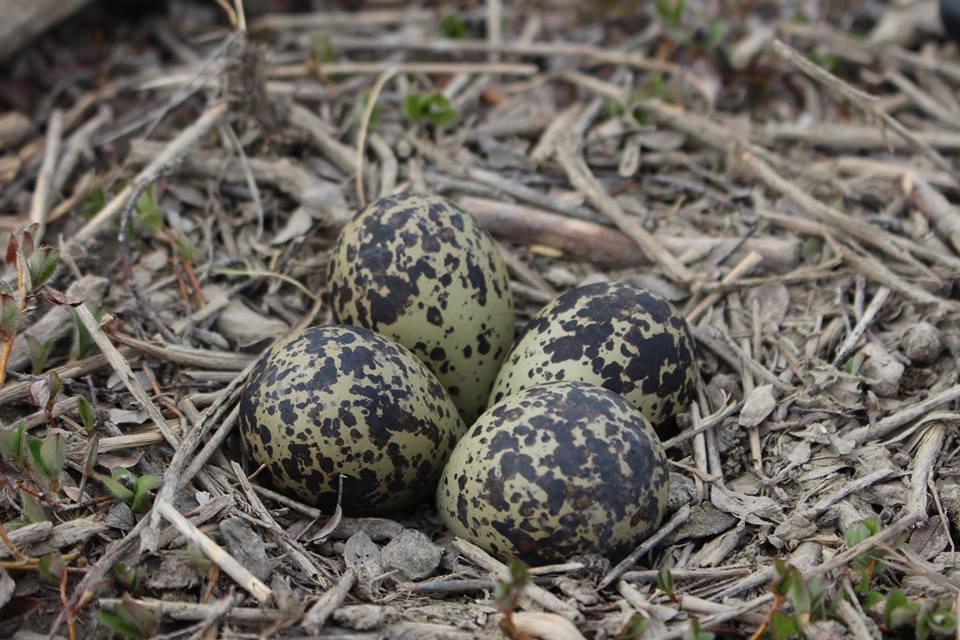
Like all waders, the young feed themselves from when they hatch out. The parents’ roles are to create the eggs, provide the environment to have them develop and protect them. Then the parents must try and protect the chicks after they hatch until they are large enough to look after themselves. A well camouflaged nest and minimizing visits to nests by parents as well as aggressive or distracting behavior can all help egg and chick survival. One of their protection mechanisms is to put on displays that make it look to a predator that they are injured and could be an easy meal, only to be drawn away from the nest area or chicks hiding spot and then have the adult fly off safely. This is demonstrated in the following photo, again taken in Alaska.
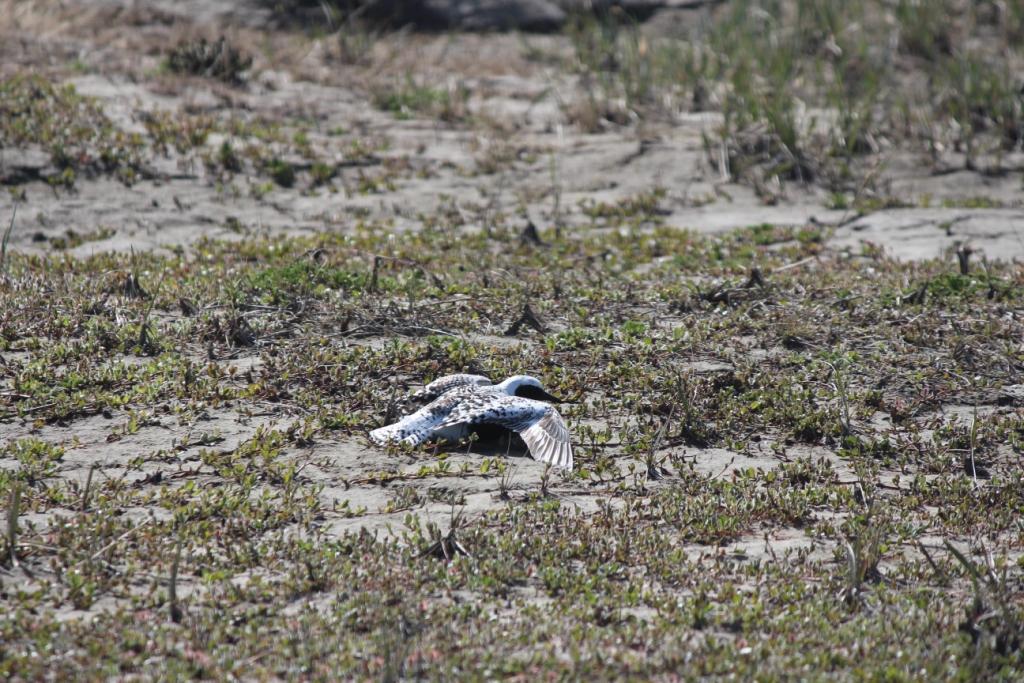
Grey Plovers may re-nest if eggs are lost shortly after laying, though in the arctic this is often less likely. There is still time for CYB to nest, though in the arctic the timelines are unforgiving. Delays in nesting may reduce the chance for fledglings to gain enough weight for their journey from the arctic.
There is a website that shows more about Wrangel Island for those interested. This website is in Russian when you first go there but a button on the top right allows it to be read in English. www.ostrovwrangelya.org
References used by Tony for these notes were:
Byrkjedal, I. & Thompson, D. 1998. Tundra plovers: Eurasian, Pacific and American Golden Plovers and Grey Plover. London, Poyser. Drury, William H. “The Breeding Biology of Shorebirds on Bylot Island, Northwest Territories, Canada.” The Auk 78, no. 2 (1961): 176-219. David J. T. Hussell, and Page Gary W. “Observations on the Breeding Biology of Black-Bellied Plovers on Devon Island, N.W.T., Canada.” The Wilson Bulletin 88, no. 4 (1976): 632-53. http://www.jstor.org/stable/4160833. Serra L.. D.A. Whitelaw, AJ. Tree & L.G. Underhill 1999. Moult, mass and migration of Grey Plovers Pluvialis squatarola wintering in South Africa. Ardea 87: 7181.
June 25, 2016
Breeding areas of CYA and CYB
Grey Plover CYA has settled into a nesting area in the tundra area nor-north west area, south of Evans Point, Wrangel Island.
Grey Plover CYB appears to have settled a nesting area in a western mountainous tundra valley area, north of the Gusinaya River, Wrangel Island.
The image below shows the breeding areas more closely. See earlier posts for the migration route taken to get to Wrangel Island

June 15, 2016
Breeding sites
CYA and CYB are now breeding on Wrangel Island, sharing the area with Snow Goose, Reindeer and many other arctic wildlife. This is very exciting to be able to ‘see’ them around their breeding site from so far away.
The sites can be seen in the image below.
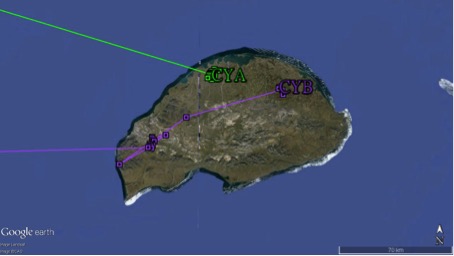
June 7, 2016
CYA joins CYB on Wrangel Island
Since its last position southeast of Yana Bay, received on the 4th June, Grey Plover CYA has flown 1,335 kilometres east to also reach Wrangel Island on the 6th June.
See the new position below and a landscape image of the island taken in July last year by Robert Mock.
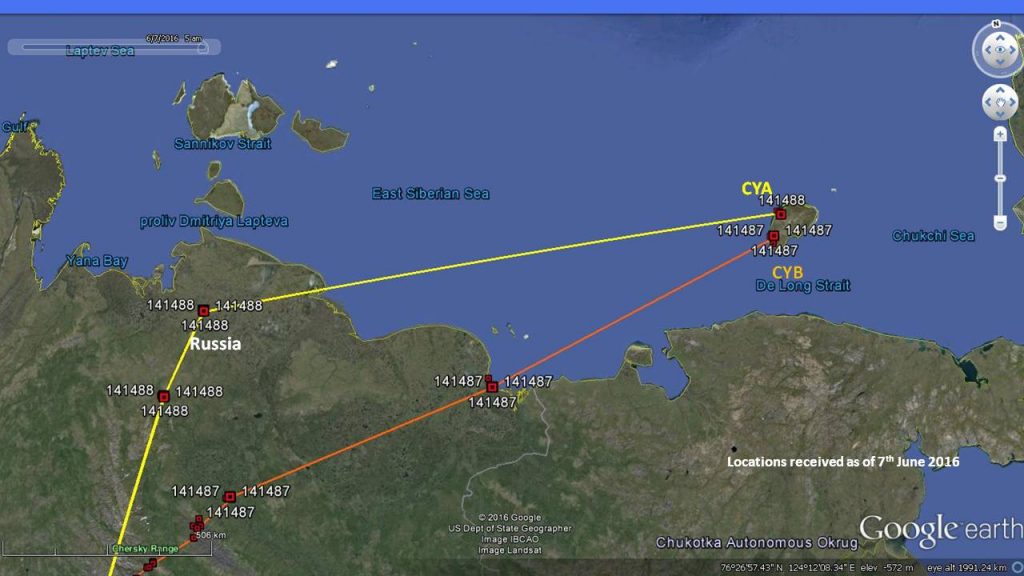
CYA joined CYB on Wrangel 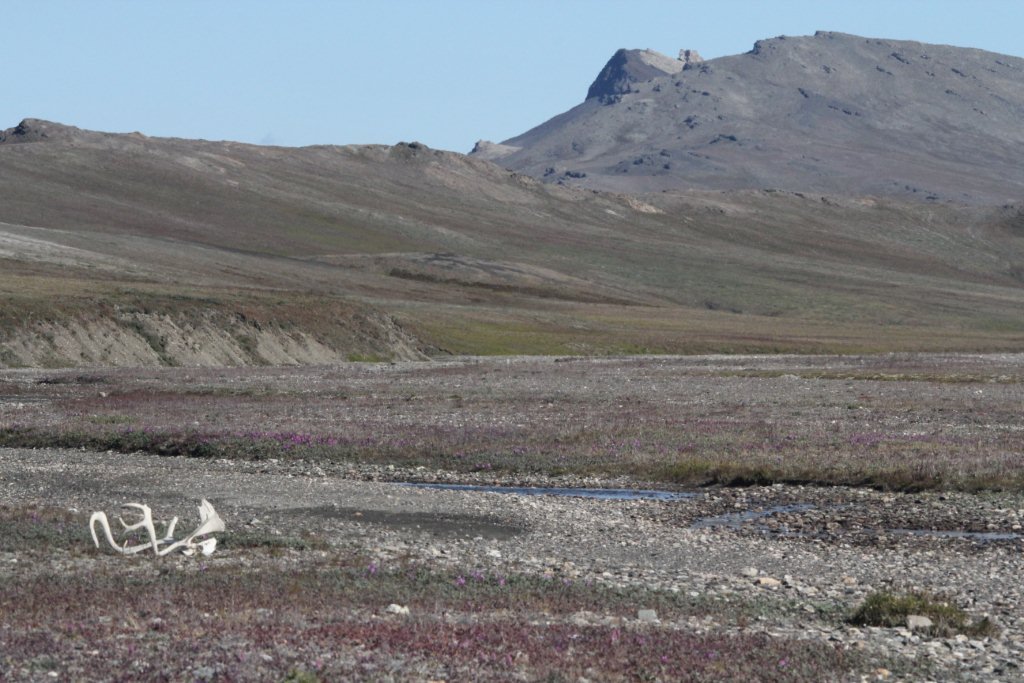
Wrangel Island landscape in July 2015 (© Robert Mock)
June 6, 2016
CYB moves across to Wrangel Island
The latest move recorded is that CYB has moved across to Wrangel Island just off the Siberian coast.
See below for where this is.
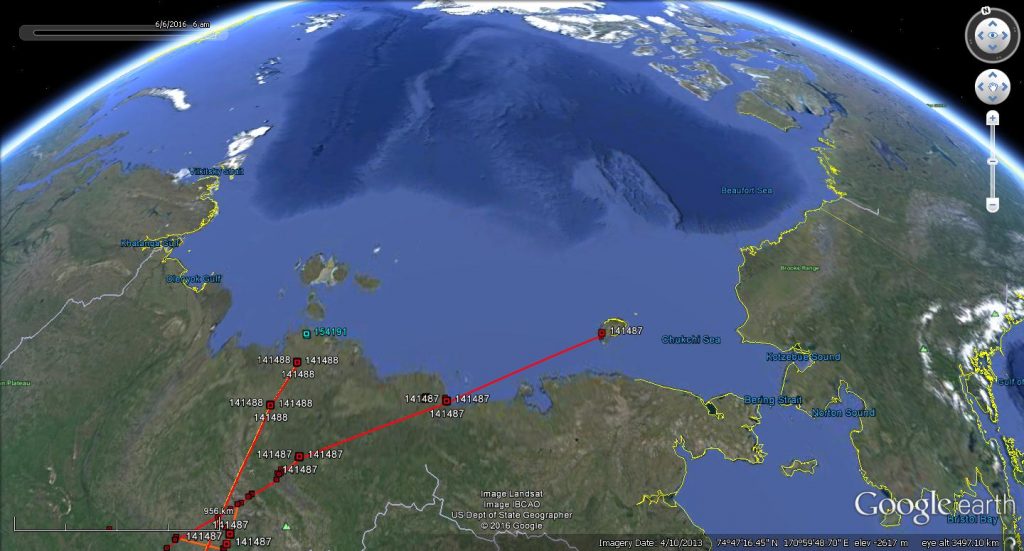
June 5, 2016
CYA gets close to the Siberian coast
Keeping up with the latest updates of the movements of the Grey Plovers is keeping us on our toes. CYA has now moved closer to the Siberian coast.
The upgraded position is shown below.
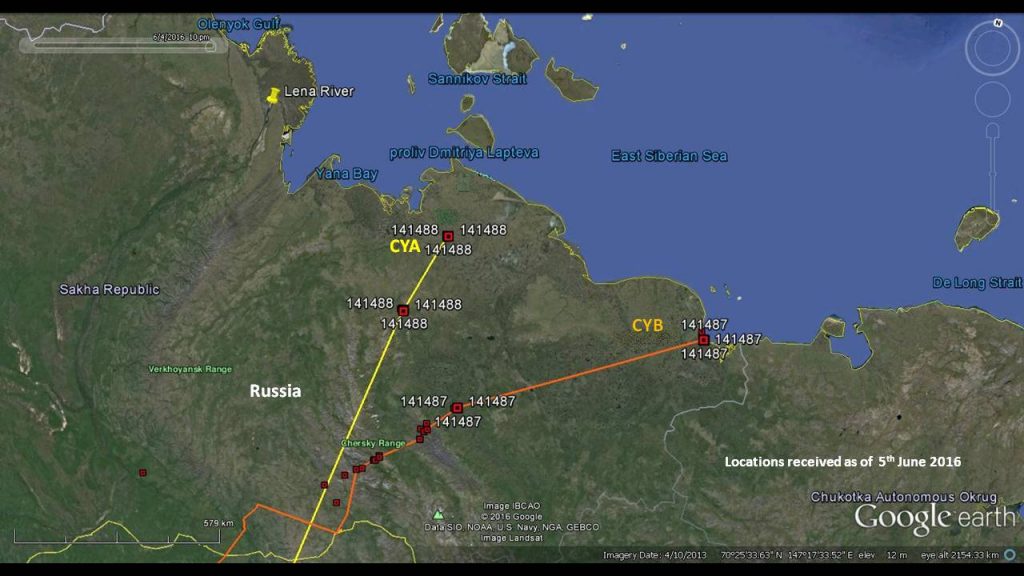
June 4, 2016
CYB reaches the Siberian coast
Grey Plover CYB has reached the Siberian Coast, as of the 3rd June, travelling 625 kilometres since the last position received on the 1st of June. CYB has reached the Kolyma Gulf of the East Siberian Sea near Nizhnekolymskiy u. Sakha Republic Russia, 86 kilometres west of Ambarchik. The Kolyma River flows into the gulf through a large delta with many islands. CYB has travelled some 4,105 kilometres since leaving its last resting position from on the 27th of May in northern Bohai Bay in China. The Plover had a significant stopover of at least 43 days in northern Bohai Bay. Since leaving Thompson Beach in South Australia on 24th March 2016, Plover CYB travelled over 12,865 kilometres, with its longest non-stop flight of 7,090 kilometres from Thompson Beach to Fujian province in mainland China, over at least 9 days.
The relative positions of both CYB and CYA as at their last transmissions are shown in the following Google image.
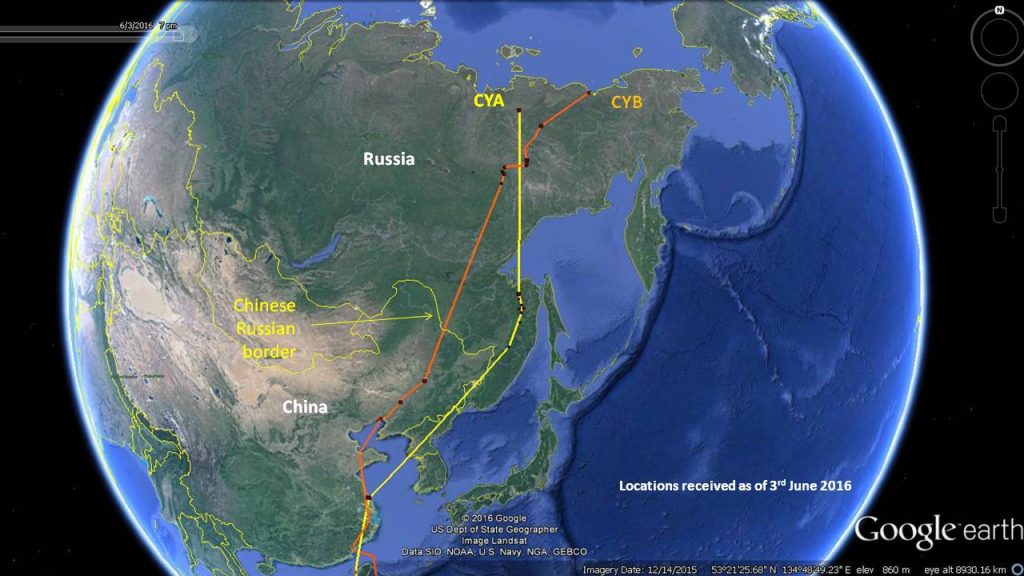
June 3, 2016
CYA moves further north
Grey Plover CYA has flown some 1,840 kilometres since its 30th May position, and as of the 2nd June was 5 kilometres north of Uyandi, in the Sakha Republic of Russia. CYA is some 290 kilometres south east of Yana Bay in the Laptev Sea. A possible destination may be the extensive Yana River delta.
CYA left its mainland Chinese stopover site offshore of Jiangsu province, mainland China, about 180 kilometres north of Shanghai after the 28th of May. As of a 30th May position, it had flown some 2,755 kilometres northeasterly towards the Sea of Okhotsk. CYA was 40 km east of the Ularovskaya River in the imeni Poliny Osipenko District of Khabarovsk Krai, and west of a small town of Kherpuchi, in the Tuguro-Chumikansky District, Khabarovsk Krai of Russia.
This bird had previously spent over fifty days on the extensive tidal flats offshore of Jiangsu province, mainland China, about 180 kilometres north of Shanghai, after making an initial landfall in Taiwan. In the lead up to its departure storm systems in the South China Sea may have created unfavourable easterly winds. As this storm system cleared, south westerlies appear to provide more favourable conditions for migration.
Since leaving Thompson Beach in South Australia on 14th March 2016, Plover CYA has travelled over 12,970 kilometres, with its longest non-stop flight of 7270 kilometres over seven days from Thompson Beach to Taiwan.
CYB still in transit?
Grey Plover CYB may still be in transit, and as of a position received on the 1st of June had flown a further 420 KM further north from its previous position on the 29th May. It is 40 kilometres east of the Indigirka River and the small town of Kuberganya, Abyysky District, Sakha Republic, Russia, and some 440 km south of the coast of the East Siberian Sea. Having travelled some 3480 kilometres since leaving its last resting position from on the 27th of May in northern Bohai Bay in China.
Since leaving Thompson Beach in South Australia on 24th March 2016, Plover CYB has travelled over 12,240 kilometres in tis flight from Thompson Beach to mainland china in around nine days.The Plover had a significant stopover of at least 43 days in northern Bohai Bay, feeding. Leaving this Chinese stopover after the 27th May, the bird flew in a northeasterly direction, and some seven hours later, had travelled 613 km kilometres passing Kangping in Liaoning Province China, bordering Inner Mongolia, some 500 kilometres from the Russian border. Weather systems moving through the area provided favourable winds for the start of her flight from China. The last satellite position on the 29thh May shows the bird was in Russia, over 3,060 kilometres from Bohai Bay in China.
The image below show where the two Grey Plovers have reached so far. What exciting times for the understanding about these bird’s migration and hopefully breeding sites.
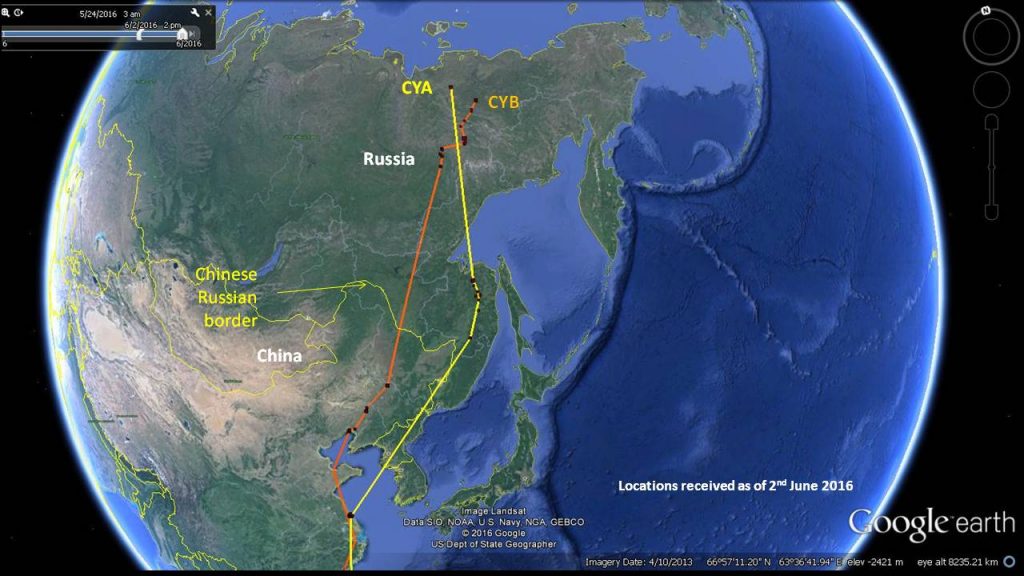
May 31, 2016
CYA moves to Russia after 50 days
Grey Plover CYA has left China and on the 30th May had flown some 2,755 kilometres north-easterly towards the Sea of Okhotsk, west of a small town of Kherpuchi, in the Tuguro-Chumikansky District, Khabarovsk Krai of Russia. The plover is some 100 kilometres from the coast, near the Sea of Okhotsk. This bird had previously spent over fifty days on the extensive tidal flats offshore of Jiangsu province, mainland China, about 180 kilometres north of Shanghai, after making an initial landfall in Taiwan.
CYB has not been transmitting since the last post so there is no new news on her yet.
The images below show were both Grey Plovers have flown to in Russia.
May 30, 2016
CYB has moved into Russia
Grey Plover CYB is now in Russia and has flown over 3,060 kilometres from its last location in northern Bohai Bay in China since leaving there on the 27th of May. From a satellite position received on the 29th May, CYB is now over the Russian Steppes in the Sakha Republic over 1,800 kilometres inside the Russian border. The position is between the Chersky and Suntar-Khayata mountain ranges. Since leaving Thompson Beach in South Australia on 24th March 2016, Plover CYB has travelled over 11,820 kilometres.
The Plover had been near the same location in northern Bohai Bay, feeding around the tidal flats for the last forty-three days. Leaving China on the 27th May the bird flew in a north-easterly direction, and some seven hours later, had travelled 613 km kilometres passing Kangping in Liaoning Province China, bordering Inner Mongolia, some 500 kilometres from the Russian border. Weather systems moving through the area provided favourable winds for the start of her flight from China. The last satellite position on the 29th May shows the bird was in Russia, over 3,060 kilometres from Bohai Bay in China.
Grey Plover CYA last position was received on 28th May and is still on the tidal flats offshore of Jiangsu Province, China about 180 kilometres north of Shanghai.
For a combination of their tracks see the images below.
May 1, 2016
CYA and CYB remain in the Yellow Sea
Both birds remain where they have been for the past two weeks, fattening for their last push up to the breeding grounds. Their activity sensors indicate that both transmitters are still on live birds.
April 10, 2016
CYA and CYB both refueling in the Yellow Sea
Both CYA and CYB have now reached the Yellow Sea. This is where many of Australia’s migratory waders refuel before making the last leg of their trip to the breeding grounds further north.
Grey Plover CYA
A reliable position received on the 5th of April placed the bird on the Jiangsu coast of the Yellow Sea, on the extensive tidal flats offshore of Dongtai city in Yancheng, Jiangsu province, about 180 kilometres north of Shanghai. The plover was still in this vicinity as of the 8th of April.
Grey Plover CYB
After the 5th of April CYB left Fujian Province making a 450 kilometre flight to arrive at Hangzhou Bay on the Sanbei Shallows on the 7th of April. On the 9th of April a number of fixes place the bird in the Laizhou Bay, Bohai Sea, near Changyi a county-level city of Weifang in the northwest corner of Shandong province. (see image below)
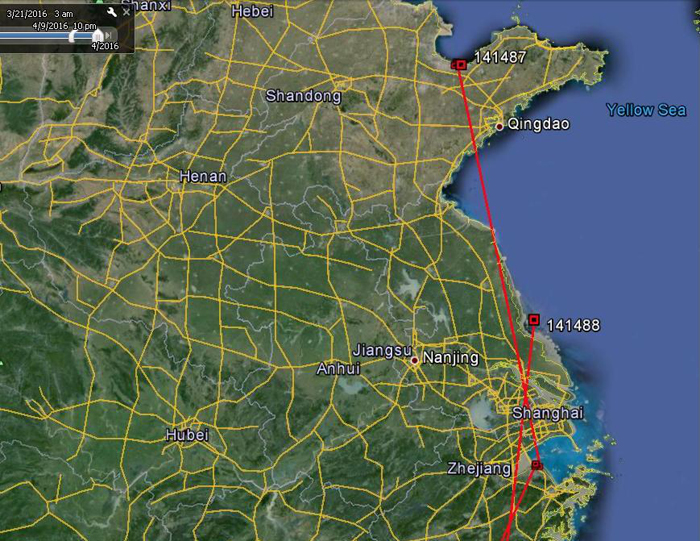
April 6, 2016
CYB and CYA have both reached the Chinese mainland
Both CYA and CYB have now reached China’s mainland. This is great news to the team.
Grey Plover CYA
CYA left Taiwan after nearly two week’s rest (it arrived there on 20/21st March) and had reached somewhere near Hangzhou Bay south of Shanghai on April 3rd. This is just south of the Yellow Sea area which is the main stopover area for Australian-based waders on their northern migration before they are ready to move on to the breeding areas somewhere further north in Siberia.
Grey Plover CYB
A high-pressure system moving over South Australia appears to have provided favourable conditions, prompting Grey Plover CYB to depart from Thompson Beach in South Australia sometime after the morning of March 24th, flying non-stop for over 7000 kilometres to reach the Chinese mainland on the 2nd of April.
From its departure from north of Adelaide, the bird tracked over the Australian central deserts and on the afternoon of the 26th was just west of Bathurst Island / Darwin headed North and as of evening on the 28th was just east of Luzon Island in the Philippines.
Since the 2nd of April Grey Plover CYB appears to resting up in the estuary, bay in mainland China somewhere in the bay east of Ningde, north-eastern coast of Fujian province, China and was still in the vicinity as of the 4th of April.
The Fujian coastline has extensive tidal mudflats and is home to large floating fishing and aquaculture villages, which date back thousands of years to the Tang dynasty.
Tracking of the two birds is shown in the following two maps.
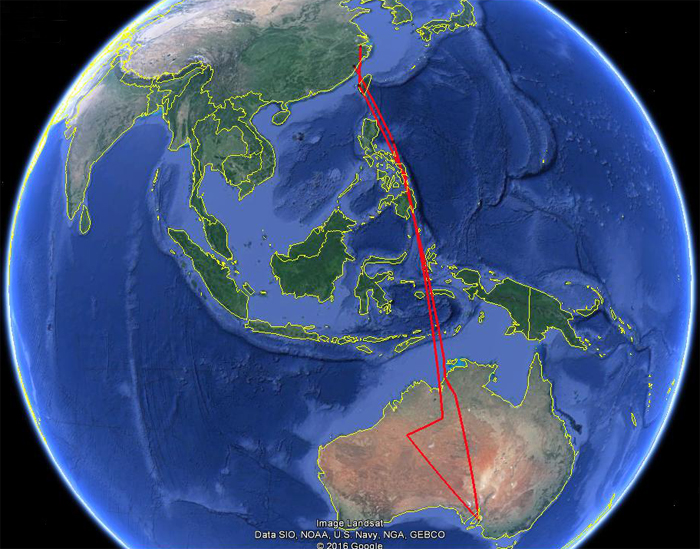
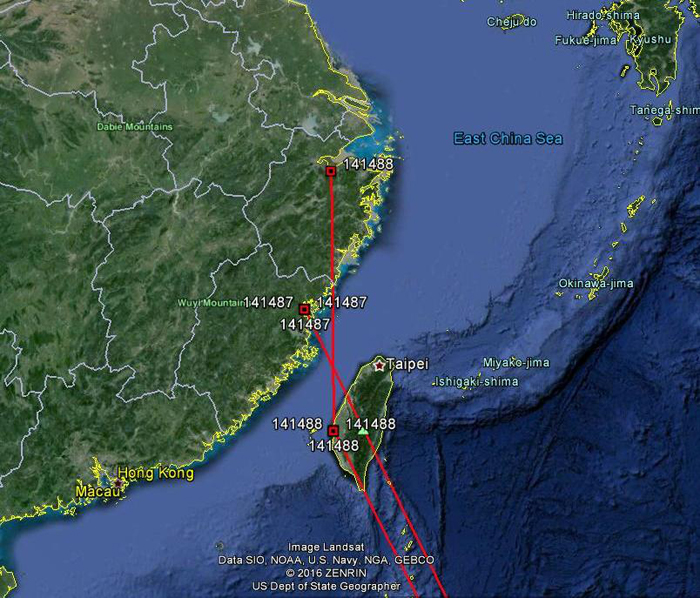
Bird 141488 is CYA and 141487 is CYB.
March 23, 2016
2016 Migration is off early with better success
In November 2015 we deployed 2 transmitters on Grey Plover. One of these carrying CYA, was photographed (see below) by Peter Owen on 16th January, not far from where she was banded. She was feeding and flying normally.
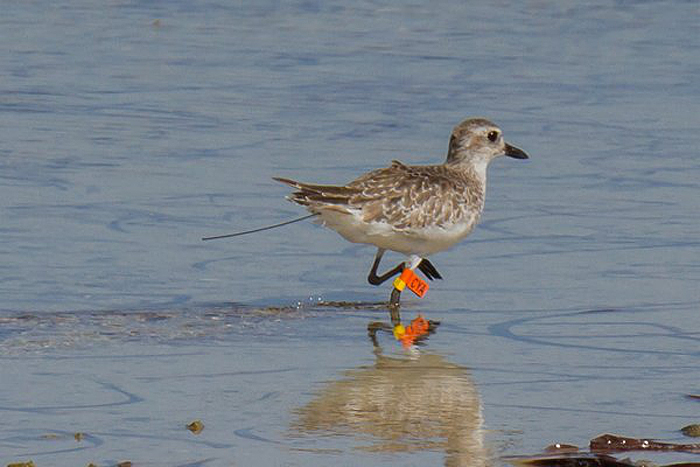
On March the 14th, a high pressure system moved in over South Australia, with favourable south-easterly winds. The Grey Plover CYA took flight across Australia, passing over the central deserts and then turned north, passing east of Kununurra in Western Australia and out over the Timor, Banda and Molucca Seas over Indonesia and continued flying over the Philippine islands of Mindanao, Samar, Catanduanes and east of Luzon.
The latest transmissions from the 20th and 21st of March shows the bird continued on to western Taiwan, after a probable non-stop 7340 kilometre flight.
The Grey Plover CYA appears to be near the Beigang River north of Dongshi township. The Beigang Estuary is a Taiwanese wetland of national importance. The Plover is likely to stay here to feed and fatten up before its next leg of its journey to its northern breeding grounds. Where exactly this is, is unknown, and one of the mysteries that researchers are trying to unravel.
Members of the Taiwan Wader Studies Group are out in the field to try and sight the bird. This group regularly searches for shorebirds banded and flagged by the Victorian Wader Study Group and other researchers across the flyway.
The Taiwanese coast is very different from the beaches, saltmarsh and tidal flats of Thompson Beach. The southern part of the Beigang estuary is a mixture of farms, marsh land, fishing ponds, levees, and planted forest. In the 1960s levees were built to turn over 1,000 hectares into sugar cane farms, rice fields and aquaculture ponds, but was abandoned due to land subsidence and salinization. The site has become an important coastal wetland and Taiwanese conservation groups advocated for their protection. In 2012, a 1,470-hectare Aogu Wetland Forest Park was opened. The park incorporates open sea water, river mouth, estuary, ponds, woodlands, fields and mangrove forests. As many as 208 species of birds have been spotted there.
The following image shows the rough track CYA has made at the start of its migration.
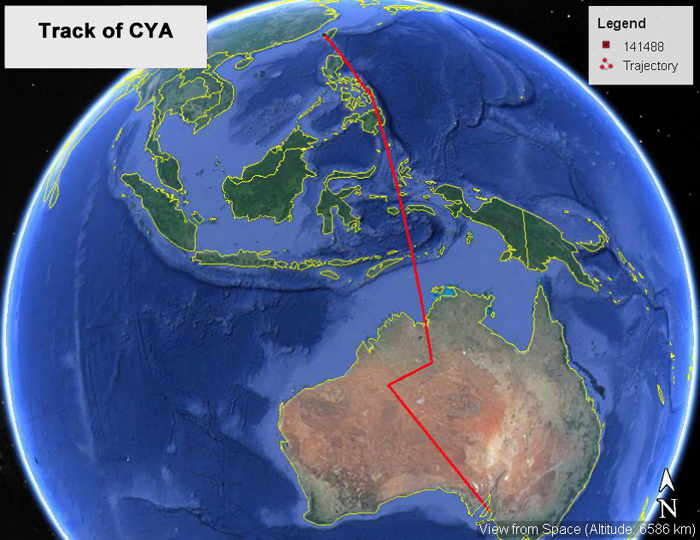
Last year CME departed Thompson Beach on migration on 21st April. This year CYA departed on 14th March. Why there is over a five week difference we don’t understand at the moment.
